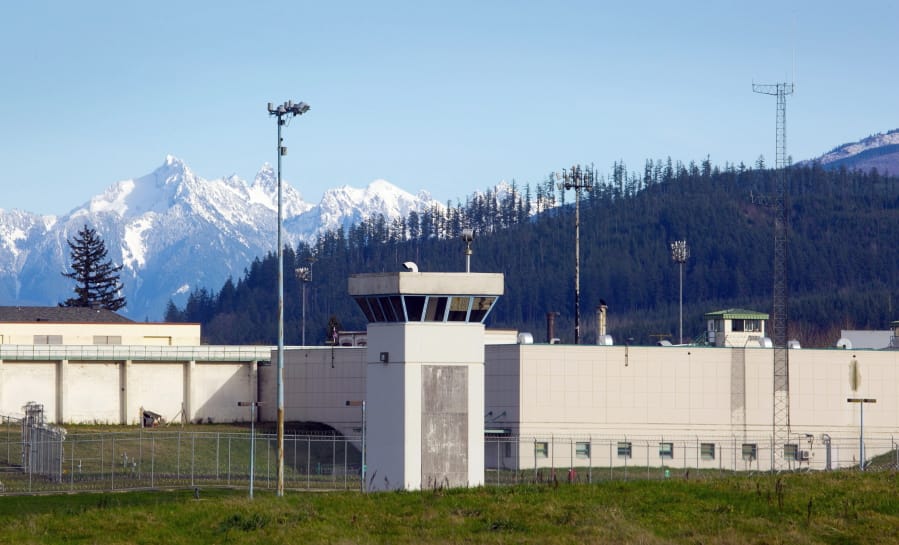OLYMPIA — Gov. Jay Inslee’s announcement of a plan to release hundreds of inmates from Washington prisons has left unanswered questions, with officials unable to share a detailed plan on Tuesday for who will be freed and exactly how the changes will protect inmates left in state lockups.
Inslee and state Department of Corrections (DOC) Secretary Steven Sinclair on Monday announced they would release as many as 950 inmates to free up room in Washington’s 12 correctional facilities as a way to help protect vulnerable inmates from contracting the coronavirus.
The announcement of the planned releases has frustrated some on both sides of the issue, with prisoner advocates worrying it won’t go far enough, victim advocates concerned about sexual assault survivors, and some GOP lawmakers condemning the move as unwise.
The Seattle Times asked DOC whether the state would use that new space to spread out medium- and high-security prisoners to lower-security units. And asked the agency to provide a list of the prisoners to be released, or at least their conviction records and sentences. The agency responded by saying in a statement that, “The Department of Corrections is still waiting for the Governor’s Proclamation in order to be able to address your questions.”
In an email Tuesday afternoon, Inslee spokeswoman Tara Lee said the governor’s office was still drafting the official proclamation.
Sen. Mike Padden, R-Spokane Valley called Inslee’s decision to release so many prisoners “unacceptable” and urged Inslee to reconsider, accusing the governor of choosing “the most extreme option available to him.”
However, advocates for inmates have urged more sweeping action and expressed disappointment in the limited numbers of inmates to be released. A lawsuit before the state Supreme Court seeks an order to release all people in state custody who are 50 or older, have serious medical conditions, or are within 18 months of scheduled release, with few exceptions. The state estimates that could result in release of more than 10,000 people.
“We had hoped that any plan would be more expansive than what has kind of vaguely been described here. There are more questions than answers with this plan,” said Nick Allen, an attorney with Columbia Legal Services. He said given the unknown length of the COVID-19 pandemic the state should be looking at broader releases to protect vulnerable inmates, and not draw “a rigid line” based on the type of crime for which people are serving time.
Mary Ellen Stone, executive director of the King County Sexual Assault Resource Center, said last week her staff has been hearing from assault victims who have seen news accounts of the lawsuit and worry the state will release their assailants. Stone said the state should take steps to protect people incarcerated in prisons from danger of infection, “but it’s a stretch to say we have to empty out our entire system.”
The state Supreme Court issued an emergency ruling Friday in response to a lawsuit filed on behalf of inmates by Columbia Legal Services, directing Washington officials to move swiftly to protect the health and safety of prisoners from the coronavirus, and tell the court how they plan to do so.
In a report filed Monday in response to the Supreme Court order, state officials wrote that they were finalizing a plan that could free as many as 950 nonviolent offenders across five different categories.
Those categories include nonviolent prisoners set to be released within 75 days; nonviolent prisoners and those considered vulnerable to the coronavirus who are set for release between two months and six months from now; and nonviolent and vulnerable prisoners scheduled for release between six and eight months from now, provided they have an approved release plan.
The other two categories are nonviolent prisoners incarcerated for low-level community supervision violations, according to the report, and nonviolent prisoners who are on work release. Electronic home monitoring could be used on some prisoners, according to the report, if feasible.
State Rep. Roger Goodman, D-Kirkland, who chairs the House Public Safety Committee, said the DOC has estimated it needs to free up at least 800 prison beds in order to be able to provide more space to inmates who remain in minimum security, dorm-style settings. He said the need to reduce crowding is not as severe in higher security units where people are already more isolated.



